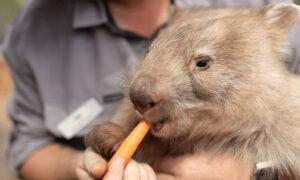Australia’s iconic Gibraltar Range waratah flower has been listed as endangered by the federal government.
This update is one of 20 new species that have been added to the imperilled plants and animals list, with nine said to be at risk of imminent extinction.
Among the critters listed as endangered are the McCulloch anemone fish, the Conondale spiny crayfish, the Moritz leaf-take gecko, and the granite leaf-tailed gecko.
Plants include the Queensland Forster’s wattle, and Victoria’s long-leaf star-hair.
A total of 39 threatened species have now been moved to higher categories of concern.
With National Threatened Species Day coming up on Sept. 7, Environment Minister Tanya Plibersek said it was unacceptable to have so many species at risk.
“It’s hard to imagine that the Gibraltar Range Waratah—a symbol of our nation—is under threat in Australia from disease and predators,” she said.
“Our government is committed to giving our precious threatened plants and animals a brighter future. That’s why today we’ve listed 20 species and one ecological community under national environment law for the first time - giving them stronger protection under law.”
‘Australia Has a Problem’: Enviro Group
The Australian Conservation Foundation (ACF) Campaigns Director Paul Sinclair said more needed to be done to manage risks to native plants and animals.“Australia has a problem, with analysis by ACF finding more species were added to the national threatened species list in 2023 than in any other year since the list was established,” he said in a statement.
“Australia’s creeks, forests, lizards, birds, woodlands, and wetlands need nature laws with teeth and a strong, independent environment protection agency to enforce them.”
Earlier in the week, Prime Minister Anthony Albanese drew the ire of green groups in the nation by suggesting he could ditch plans put forward by Plibersek for a federal watchdog that could determine whether developments should or should not go ahead.
“A strong, independent, and well-resourced regulator is critical for Australia to move beyond the situation where vested interests influence decision making, undermining nature protection,” Sinclair said.
“Every day and every decision matters for our wildlife. Further delays to nature law reform risk more extinctions.”
Albanese said his government had, however, been talking to the Opposition and others in an attempt to get Environment Protection Australia legislation through the parliament before the next election.
The Nature Positive (Environment Protection Australia) Bill 2024 has been described by the government as a “tough cop on the beat” that would be able to oversee illegal land clearing, with a recent audit finding that one in seven developments could be clearing land illegally.
Fines of up to $780 million or time in prison could be implemented as punishments under the legislation proposed in May.
However, some laws intended to benefit the natural environment may not go before parliament until after the upcoming federal election next year.







